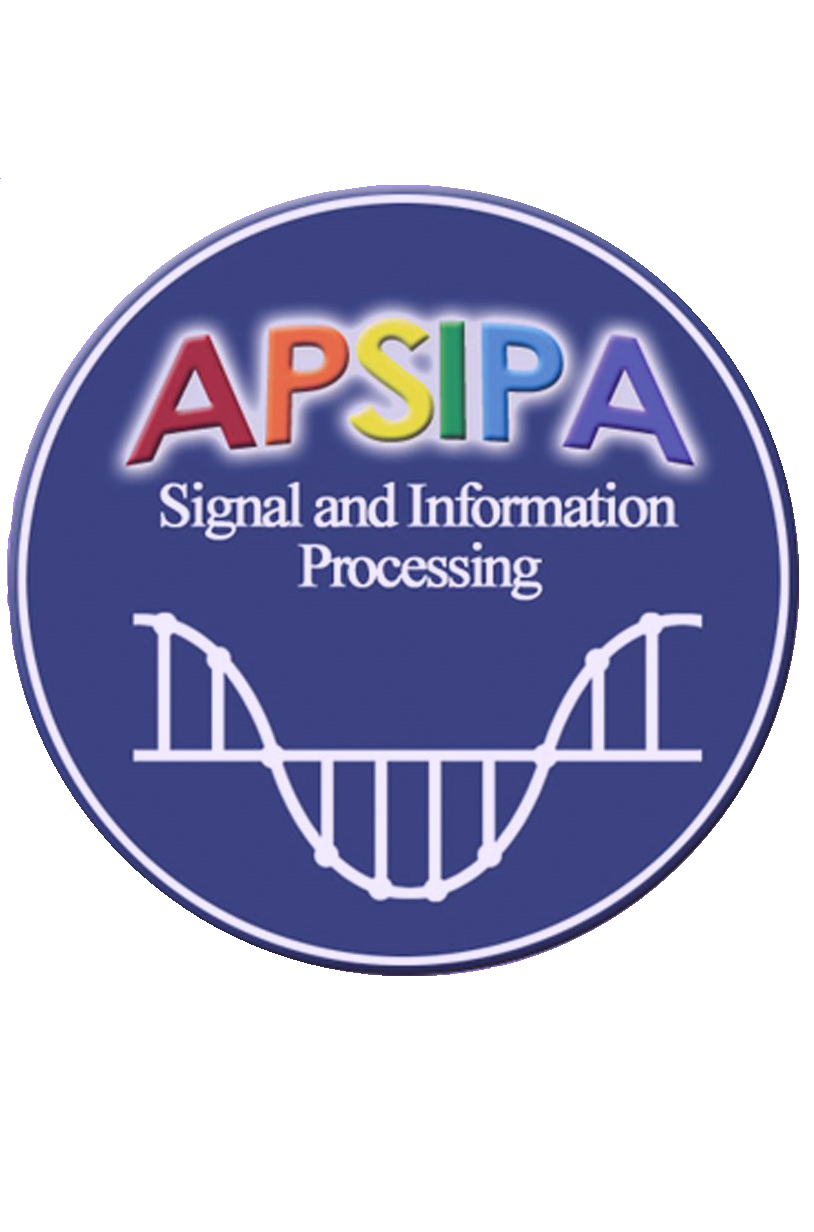
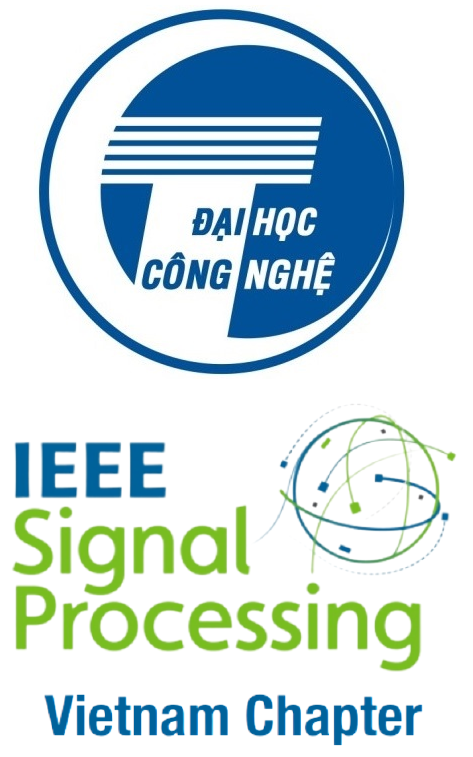


 Prof. Nam-Ik Cho (Seoul National University)
Prof. Nam-Ik Cho (Seoul National University)
Talk Title: Deep Learning Methods for Image Denoising/Restoration Abstract: Deep convolutional neural networks (CNNs) provide very high performance in image denoising and restoration problems. In this talk, I present the history and trend of image denoising in several aspects. Specifically, the category of deep-learning-based image denoising methods will be discussed, such as supervised, unsupervised, and noise generation methods. I also review some efforts in developing real-world noise datasets and denoising methods, which are important as practical denoising methods. In explaining these methods, I will take some examples of our recent supervised methods for the transfer learning from synthetic to real noise denoising and noise-prior learning method, which achieves efficient denoising performances for real-world noise. Biography: Nam-Ik Cho received his B.S., M.S., and Ph.D. degrees in control and instrumentation engineering from Seoul National University, Seoul, Korea, in 1986, 1988, and 1992, respectively. From 1991 to 1993, he was a Research Associate at the Engineering Research Center for Advanced Control and Instrumentation, Seoul National University. From 1994 to 1998, he was with the University of Seoul, Seoul, Korea, as an Assistant Professor of Electrical Engineering. He worked as a visiting scholar in the Dept. of Electrical Eng., University of California, Santa Barbara, in 1996. He joined the Dept. of Electrical and Computer Engineering, Seoul National University, in 1999, where he is currently a Professor. During 2011-2013, he served as a Vice Dean of the College of Engineering, Seoul National University, and during 2014-2016 he served as Director of the Institute of New Media and Communications at Seoul National University. His research interests include image processing, adaptive filtering, and computer vision. In this area, he published 100+ international journal papers, 180+ international conference papers, and 25 U.S. Patents. Dr. Cho is currently a Senior Member of the IEEE Signal Processing Society, serving as a handling editor of Signal Processing, Elsevier, and also EURASIP Journal of Image and Video Processing. He also served as a Board of Governor (BoG) of Asia-Pacific Signal and Information Processing Association (APSIPA) 2017-2019, and is again serving as the BoG 2021-2022. He was the Technical Program Co-Chair of APSIPA ASC 2020, Overview Session Co-Chair of APSIPA ASC 2019, Workshop Chair of ACM Multimedia 2018, Technical Program Co-Chair of IEEE ICASSP 2017, Technical Program Co-Chair of APSIAP ASC 2016, Special Session Chair of IEEE BMSB 2012, and Finance Chair of IEEE ISPACS 2004. He received the 2019 EURASIP Journal of Video and Image Processing Best Paper Award, 2017 Journal of Society of Information Display Best Paper Award, 2014 Chaster Sall Award from IEEE Consumer Electronics Society, Best Poster Paper Award from the Society of Information Display Eurodisplay 2015, and Best Paper Award from IEEE ICSIPA 2015. |
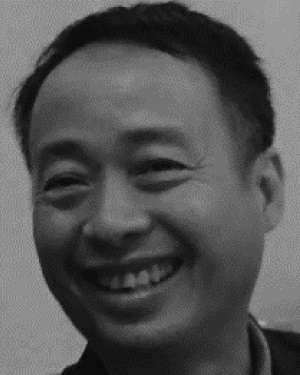 Prof. Kosin Chamnongthai (King Mongkut's University of Technology Thonburi)
Prof. Kosin Chamnongthai (King Mongkut's University of Technology Thonburi)
Talk Title: A Method of Eye-Gaze-Based Human-Intention Detection Abstract: Eye trackers are currently used to sense the positions of both the centers of the pupils and the point-of-gaze (POG) position on a screen, in keeping with the original objective for which they were designed; however, it remains difficult to measure the positions of three-dimensional (3D) POGs. This talk proposes a method for 3D gaze estimation by using head movement, pupil position data, and POGs on a screen. The method assumes that a person, usually unintentionally, moves his or her head a short distance such that multiple straight lines can be drawn from the center point between the two pupils to the POG. When the person is continuously focusing on a given 3D POG while moving, these lines represent the lines of sight that intersect at a 3D POG. That 3D POG can, therefore, be found from the intersection of several lines of sight formed by head movements. To evaluate the performance of the proposed method, experimental equipment was constructed, and experiments with male and female participants were performed in which the participants looked at nine test points in a 3D space for approximately 20s each. The experimental results reveal that the proposed method can measure 3D POGs with average distance errors of 13.36 cm, 7.58 cm, 5.72 cm, 3.97 cm, and 3.52 cm for head movement distances of 1 cm, 2 cm, 3 cm, 4 cm, and 5 cm, respectively. Biography: Kosin Chamnongthai received the B.Eng. degree in applied electronics from The University of Electro-Communications, in 1985, the M.Eng. degree in electrical engineering from the Nippon Institute of Technology, in 1987, and the Ph.D. degree in electrical engineering from Keio University, in 1991. He is currently a Professor with the Department of Electronic and Telecommunication Engineering, Faculty of Engineering, King Mongkut's University of Technology Thonburi. His research interests include computer vision, image processing, robot vision, signal processing, and pattern recognition. He is a member of IEICE, TESA, ECTI, AIAT, APSIPA, TRS, and EEAAT. He is the Vice President-Conference of APSIPA Association (2020-2021). He has served as the Chairperson for the IEEE COMSOC Thailand, from 2004 to 2007, and the President for ECTI Association, from 2018 to 2019. He has served as an Editor for ECTI E-Magazine, from 2011 to 2015, and an Associate Editor for ECTI-EEC Transactions, from 2003 to 2010, and ECTI-CIT Transactions, from 2011 to 2016. |
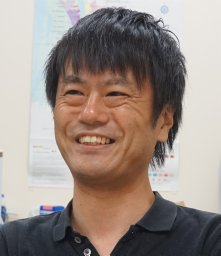 Prof. Toshihisa Tanaka (Tokyo University of Agriculture and Technology)
Prof. Toshihisa Tanaka (Tokyo University of Agriculture and Technology)
Talk Title: Automated Diagnostic Aid for Epilepsy with a Cloud-based Platform of Multi-facility Databases Abstract: The current challenge is the unavailability of a sufficient number of specialists that can analyze the needed at present complex neurophysiological (electrophysiological) investigations and provide adequate management to a broad range of conditions, such as epilepsy, in a large patient population. The presenter reports an attempt to create a model integrating specialists' knowledge and decision-making in the form of AI modules in a platform that can be shared. Biography: Toshihisa Tanaka received the B.E., the M.E., and the Ph.D. degrees from the Tokyo Institute of Technology in 1997, 2000, and 2002, respectively. From 2000 to 2002, he was a JSPS Research Fellow. From October 2002 to March 2004, he was a Research Scientist at RIKEN Brain Science Institute. In April 2004, he joined the Department of Electrical and Electronic Engineering, at the Tokyo University of Agriculture and Technology, where he is currently a Professor. In 2005, he was a Royal Society visiting fellow at the Communications and Signal Processing Group, Imperial College London, U.K. From June 2011 to October 2011, he was a visiting faculty member in the Department of Electrical Engineering, the University of Hawaii at Manoa. His research interests include a broad area of signal processing and machine learning, including brain and biomedical signal processing, brain-machine interfaces, and adaptive systems. He is a co-editor of Signal Processing Techniques for Knowledge Extraction and Information Fusion (with Mandic, Springer), 2008, and a leading co-editor of Signal Processing and Machine Learning for Brain-Machine Interfaces (with Arvaneh, IET, U.K.), 2018. He served as an associate editor and a guest editor of special issues in journals, including IEEE Access, Neurocomputing, IEICE Transactions on Fundamentals, Computational Intelligence and Neuroscience (Hindawi), IEEE Transactions on Neural Networks and Learning Systems, Applied Sciences (MDPI), and Advances in Data Science and Adaptive Analysis (World Scientific). He served as editor-in-chief of Signals (MDPI). Currently, he serves as an associate editor of Neural Networks (Elsevier). Furthermore, he served as a Member-at-Large, on the Board of Governors (BoG) of the Asia-Pacific Signal and Information Processing Association (APSIPA). He was a Distinguished Lecturer of APSIPA. He serves as a Vice-President of APSIPA. He is a senior member of IEEE, and a member of IEICE, APSIPA, the Society for Neuroscience, and the Japan Epilepsy Society. |
 Prof. Nipon Theera-Umpon (Chiang Mai University)
Prof. Nipon Theera-Umpon (Chiang Mai University)
Talk Title: A.I. and Digital Technology in Biomedicine and Healthcare Abstract: Artificial intelligence (A.I.) and digital technology have been applied in several areas including military, medicine, science, engineering, economics, etc. This presentation briefly describes biomedical engineering, digital technology, and biological/artificial intelligence. The research works conducting at Computational Intelligence (C.I.) Research Laboratory, Chiang Mai University, are also presented. The research works at C.I. Lab on that applied to health science applications are particularly focused in this presentation. We successfully applied A.I./C.I. techniques in several real-world health/biomedical problems. Biography: Nipon Theera-Umpon received his B.Eng. (Hons.) degree from Chiang Mai University, Thailand, M.S. degree from University of Southern California, U.S.A., and Ph.D. degree from the University of Missouri-Columbia, U.S.A., all in electrical engineering. He has been working with the Department of Electrical Engineering, Chiang Mai University since 1993. He has served as editor, reviewer, general chair, technical chair and committee member for several journals and conferences. He has been bestowed several royal decorations and won several awards. He was associate dean of Engineering and chairman for graduate study in electrical engineering. He is serving as the director of Biomedical Engineering Institute and the chairman for graduate study in biomedical engineering, Chiang Mai University. He is a member of Thai Robotics Society, Biomedical Engineering Society of Thailand, Council of Engineers, and The Engineering Institute of Thailand. He has served as Vice President of the Thai Health Technology Association and Vice President of the Thai Engineering in Medicine and Biology Society. Dr. Theera-Umpon is a senior member of the IEEE, and is a member of IEEE-IES Technical Committee on Human Factors. He has published more than 200 full research papers in international refereed publications and a handful of them in national publications. His textbooks in Thai language include Digital Signal and Image Processing: Theories and Applications, Advanced Digital Signal Processing, Digital Signal Processing in Telecommunications, etc. His research interests include Artificial Intelligence, Pattern Recognition, Digital Image Processing, Neural Networks, Fuzzy Sets and Systems, Machine Learning, Big Data Analysis, Data Mining, Medical Signal and Image Processing. |
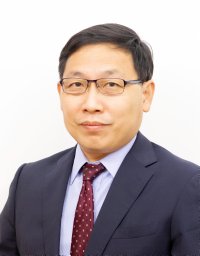 Prof. Woon-Seng Gan (Nanyang Technological University)
Prof. Woon-Seng Gan (Nanyang Technological University)
Talk Title: Augmented/Mixed Reality Audio for Hearables: Sensing, Control and Rendering Abstract: Augmented and Mixed Reality (AR/MR) is emerging as one of the key technologies in the future of computing. Audio cues are critical for maintaining a high degree of realism, social connection, and spatial awareness for various AR/MR applications such as teaching and training, gaming, remote work, education, and virtual social gatherings. Motivated by a wide variety of AR/MR listening experiences delivered over hearables, this talk systematically reviews and outlines the integration of fundamental and advanced signal processing techniques for AR/MR audio to equip the researchers and engineers in the signal processing community for the next wave of AR/MR. I will also show examples on some of the work that is being carried out in my lab at NTU, Singapore. Biography: Woon-Seng Gan received his BEng (1st Class Hons) and Ph.D. degrees, both in Electrical and Electronic Engineering from the University of Strathclyde, the UK in 1989 and 1993 respectively. He is currently a Professor of Audio Engineering and Director of the Smart Nation TRANS (national) Lab in the School of Electrical and Electronic Engineering in Nanyang Technological University, Singapore. He also served as the Head of the Information Engineering Division in the School of Electrical and Electronic Engineering in Nanyang Technological University from 2011-2014, and Director of the Centre for Info-comm Technology from 20016-20019. His research has been concerned with the connections between the physical world, signal processing, and sound control, which resulted in the practical demonstration and licensing of spatial audio algorithms, directional sound beam, and active noise control for headphones and open window. He has published more than 400 international refereed journals and conference papers and has translated his research into 6 granted patents. He had co-authored three books on Subband Adaptive Filtering: Theory and Implementation (John Wiley, 2009); Embedded Signal Processing with the Micro Signal Architecture, (Wiley-IEEE, 2007); and Digital Signal Processors: Architectures, Implementations, and Applications (Prentice Hall, 2005). He has also given several keynotes and distinguished lecturer speeches at IEEE, AES, and APSIPA conferences. He was also the recipient of the 2017 APSIPA Sadaoki Furui Prize Paper Award. He is a Fellow of the Audio Engineering Society (AES); a Fellow of the Institute of Engineering and Technology (IET); and a Senior Member of the IEEE. He served as an Associate Editor of the IEEE/ACM Transaction on Audio, Speech, and Language Processing (TASLP; 2012-15) and was presented with an Outstanding IEEE TASLP Editorial Board Service Award in 2016. He also served as the Associate Editor for the IEEE Signal Processing Letters (2015-19). He is currently serving as a Senior Area Editor of the IEEE Signal Processing Letters (2019-); Associate Technical Editor of the Journal of Audio Engineering Society (JAES; 2013-); Editorial member of the Asia Pacific Signal and Information Processing Association (APSIPA; 2011-) Transaction on Signal and Information Processing; Associate Editor of the EURASIP Journal on Audio, Speech, and Music Processing (2007-). He was elected as Board of Governor in 2014 and Vice President - Institutional Relations and Education Program in 2017 for the Asia Pacific Signal and Information Processing Association (APSIPA). He also participates actively in the IEEE Signal Processing Industry DSP committee and IEEE IoT special interest group. He served as a member of the IEEE Signal Processing Design and Implementation of Signal Processing System from 2012-2015 and Applied Signal Processing System from 2019-; IEEE Signal Processing Education Technical Committee from 2009-2015. Additionally, he is also the General Conference Chair of APSIPA Annual Summit and Conference in 2017, and he is the Technical Program Chair of the IEEE International Conference on Acoustics, Speech, and Signal Processing (ICASSP) held in Singapore 22-27 May 2022. Prof. Gan and his work have been covered in several press articles, including New York Times, Wall Street Journal, Scientific American, IEEE Spectrum, New Scientist Magazine, Naver(S. Korea); and featured in media like CBS Innovation Nation (USA), Nas Daily (Singapore), Galileo TV(Germany), Channel News Asia (Singapore). |
 Prof. Darenee Hormdee (Khon Kaen University)
Prof. Darenee Hormdee (Khon Kaen University)
Talk Title: Vaginal Hysterectomy Robotic System Abstract: Robot Assisted Surgery (RAS) was invented to enhance the capabilities of surgeons performing open surgery and to especially surmount the procedure limitations of pre-existing Minimal Invasive Surgery (MIS), an option to open surgery. Growth in computer technology plays a progressively essential role in the evolution of modern surgical paradigms. As a result, surgical robots have widely evolved from autonomous systems to tele-manipulated platforms and mechanically grounded, cooperatively-controlled robots. In 2000, the da Vinci Surgery System broke new ground by becoming the first robotic surgery system giving surgeons an advanced set of instruments to use in performing robotic-assisted minimally invasive surgery. Whilst nowadays, surgical robots have seen in both commercial and clinical success, uptake of these robots remains moderate because of their high cost. This presentation introduces applying Artificial Intelligence (AI) on our latest KKU Vaginal Hysterectomy Robot. The objective of this project is to propose a solution to the object detection and localization open problem in RAS video understanding, using a computer vision approach and the recent advances of deep learning. Along with the new version of KKU Vaginal Hysterectomy Robot; computer visualization, robotic guidance, and live navigation feedback would provide the improvement on accuracy and precision throughout the surgery procedure. Biography: Daranee Hormdee graduated from Khon Kaen University, Thailand, in 1996, obtaining bachelor's degree (B.Eng.) in Computer Engineering. Since then, she has joined the University and worked as a Junior Lecturer. In 1997 she was awarded the Thai Government Scholarship to pursue Master and Doctorate Levels. In 1998 and 2002 she gained an M.Sc. in Advanced Computer Science with a project title "An Analysis of Asynchronous Processor Pipelines" and a Ph.D. in Computer Science with a thesis title "Copy-back Cache Organisation for an Asynchronous Microprocessor", respectively, which were both carried out in the AMULET group at the Department of Computer Science, the University of Manchester, UK. After graduated, she has continued to serve Khon Kaen University, Thailand, as a Lecturer in the Department of Computer Engineering. In 2005, she was awarded an Assistant Professor position in Computer Engineering. Her research interests include Asynchronous Logic Design, Digital System Design, Embedded Systems and Microprocessor Systems and Architecture. Since 2007, Ms. Hormdee has also served the University as an Assistant to the President for Research and Technology Transfer Affairs. |